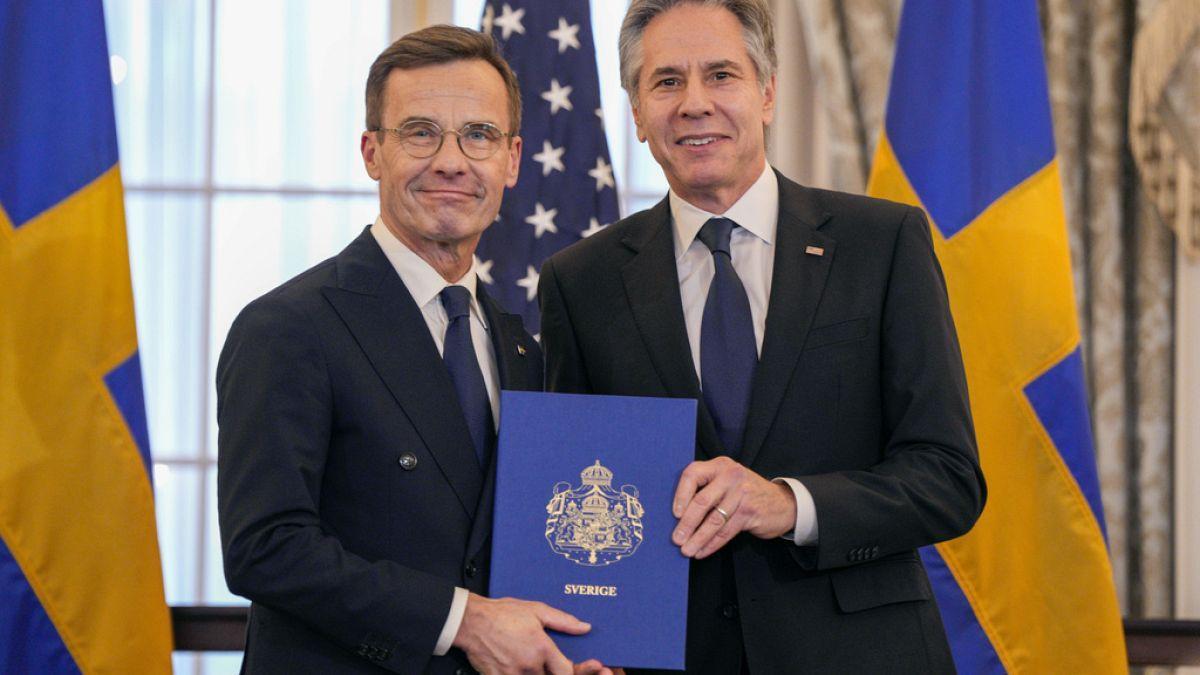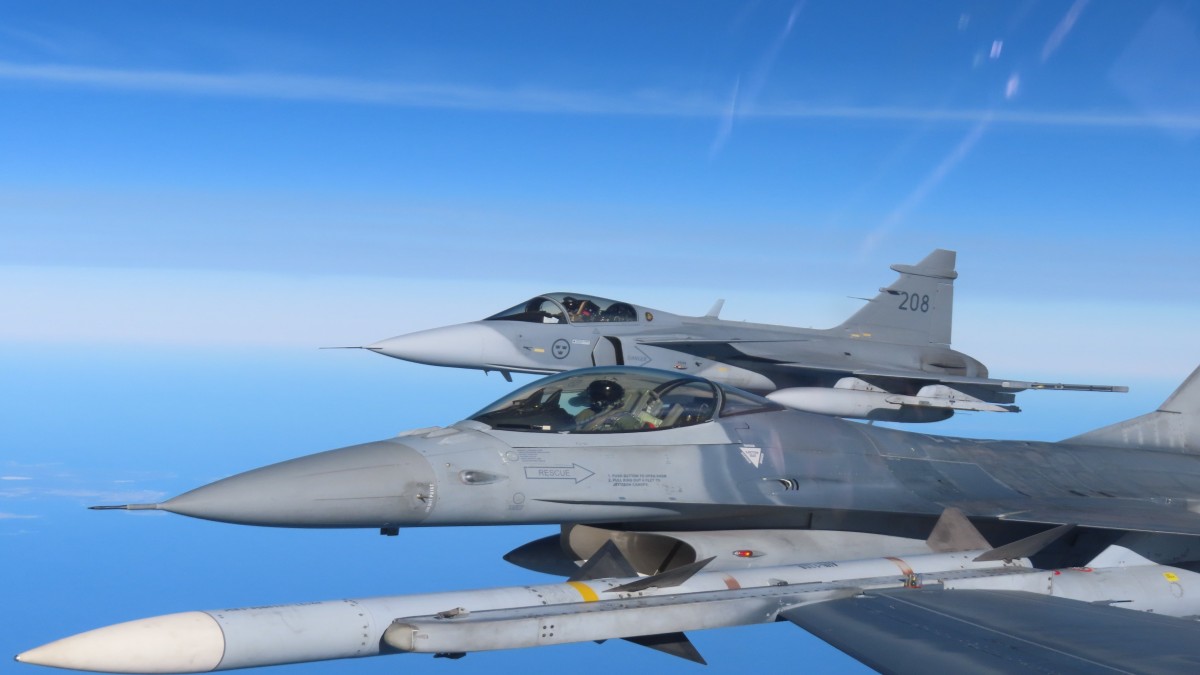To counter Russia’s security threat, Sweden, the newest NATO member, has indicated that it is willing to bolster defenses on the crucial island of Gotland in the Baltic Sea.
The announcement comes days after Sweden joined NATO after years of neutrality. The decision to join the alliance was triggered by the Russian invasion of Ukraine in February 2022, with fears that the war could spill over to other parts of Europe.
Swedish Prime Minister Ulf Kristersson recently told the media that fortifying the crucial island would be one of the first agenda items that his country would discuss with its NATO partners. Strengthening Gotland “is one obvious thing to be discussed with our new NATO allies,” Kristersson told the Financial Times.
The decision to fortify Gotland comes after Russia issued blatant warnings to Sweden about joining NATO. In days leading to Hungary’s ratification of Sweden’s NATO membership, Russia said it would take unspecified military-technical and other countermeasures to protect it.
Maria Zakharova, the spokesperson for the Russian Foreign Ministry, said, “We will closely monitor what Sweden will do in the aggressive military bloc, how it will realize its membership in practice … based on this, we will build our response with retaliatory steps of a military-technical and other nature.”

The Baltic Sea has emerged as a major flashpoint, especially since the US-led Western alliance began describing it as a “NATO lake,” signifying their strategic unity before what they perceived as Moscow’s military belligerence since the 2014 Donbas war. With Sweden entering the bloc, that rhetoric has been significantly fueled, triggering the decision to militarize and secure its strategically placed island in the Baltic from Moscow.
The island of Gotland, home to about 60,000 people, is located 150 miles from the Russian exclave of Kaliningrad and about 50 miles from the Swedish shore. Often referred to as an “unsinkable aircraft carrier,” Gotland is said to occupy a crucial strategic position in the Baltic Sea.
Located between Sweden and Latvia, it has often been mentioned by Russian media as a potential target should Russia ever invade the Baltic republics. Kristersson said that Sweden’s “small” military presence on Gotland was a significant weakness for the alliance, one that other Nordic and Baltic region officials have frequently brought up.
“There are quite a few things in terms of how to deploy our resources, where to focus the most. And obviously, everything to do with the Baltic Sea is such an obvious candidate,” the Swedish PM said. “That goes in terms of presence on Gotland, but also in terms of surveillance, in terms of submarine capabilities.”
Sweden said it was reinforcing its military presence on the island of Gotland in January 2022, before Russia invaded Ukraine. Just over a month after the invasion, the Swedish government announced that it had set aside up to 1.6 billion Swedish crowns ($163 million) to fortify its military facilities on the island of Gotland in the Baltic Sea.
It stated at that time that a portion of the funds would be used to build more infrastructure, including barracks, on the island. “The aim is to be able to house many more conscripts and to make operations more effective, and in that way contribute to greater capacity … on Gotland,” Swedish Financial Markets Minister Max Elger told reporters at the time.

Gotland’s Security Is A Strategic Requirement
With only 370 soldiers, Sweden reestablished a regiment on Gotland in 2018, a far cry from the 25,000 soldiers and four regiments of the late 1990s.
Latvia’s foreign minister, Krišjānis Kariņš, told the Financial Times last week that “Gotland and Sweden being in NATO changes the entire calculus.” It implies that NATO would once again be in charge of the Baltic Sea strategically. Russia is well familiar with this question.
NATO’s dominance over Gotland makes the defense of the three Baltic states much easier. The island permits an additional means of fortifying the region above the present land route from Poland through the constricted Suwałki Gap, a weak point in NATO territory situated between Belarus and the Russian exclave of Kaliningrad.
Due to shorter geographic distances in the Baltic Sea region, operating in the area will depend heavily on freedom of movement. After Russia annexed Crimea in 2014, the US and NATO held a series of drills to prepare for the defense of the Baltics, with Gotland playing a key part.
This importance is further highlighted by Russia’s likelihood of using Kaliningrad to establish a “bubble” of anti-access/area-denial capability throughout the region.
During his visit to Gotland in July 2017, Ben Hodges, the commanding general of US Army forces in Europe, referred to the island as a crucial location. Speaking to the Swedish soldiers, he clarified, “You have a strategically very important task here. I do not think there is any island anywhere that is more important.”
In the years following the end of the Cold War, when cooperation and peace prevailed throughout the Baltic Sea region, Gotland was demilitarized in 2005. However, Sweden’s demilitarized posture posed a security risk as soon as Russia annexed Crimea in 2014. For this reason, in 2016, the Swedish military chose to place permanent troops back on the island.
A new regiment with 400 continuously stationed soldiers, an amphibious battalion of the Home Guard, and a mechanized battalion equipped with Leopard 2 tanks and CV90 armored vehicles were formed in 2018. Air defense systems were turned back on in 2021.
As part of NATO’s multinational force, Sweden had earlier declared its intention to dispatch a combat battalion to Latvia, which is about 200 kilometers from Gotland. As the Russian threat continues to grow after Sweden joined NATO, the Swedish government is now rushing to secure Gotland.
- Contact the author at sakshi.tiwari9555 (at) gmail.com
- Follow EurAsian Times on Google News




